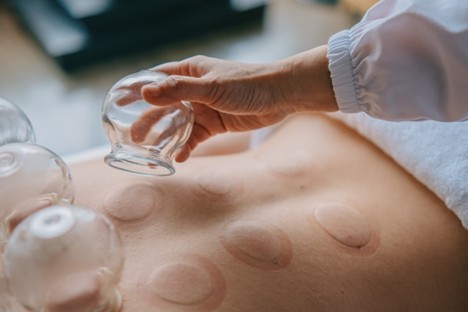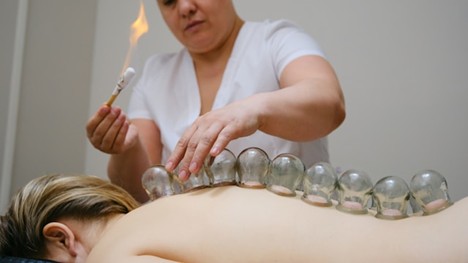If you’re looking for a gentle yet effective way to relieve muscle soreness, tension, or everyday stress from long workdays or tough workouts, suction-based therapies might be the answer. Often referred to as suction massage, glass therapy, or vacuum cup treatments, these techniques offer a natural, drug-free approach to easing discomfort and promoting relaxation. With the right tools and a little know-how, it’s easier than ever to experience the benefits in the comfort of your own space. Not sure where to begin? Start by finding the best cupping therapy set to match your needs – it’s the first step toward safe, at-home relief that actually works.
Why Try At-Home Suction Therapy?
Using suction on targeted areas stimulates circulation, releases tight fascia, and helps flush metabolic buildup from sore muscles. People also report:
- Relief from stiff necks, tight shoulders, or back spasms
- Quick recovery after workouts
- Calmer mood and mental clarity
- Relief from headaches and tension in the jaw
It’s an accessible, relaxing complement to your wellness routine, with benefits you’ll often feel almost immediately.
What You’ll Need (And What to Skip)
Items to Gather:
- A set of reusable silicone suction cups in varied sizes
- Comfortable, breathable clothing or exposed skin
- Optional massage oil (jojoba, sweet almond, or grapeseed) for glide
- Timer (use your phone or kitchen timer)
- Mirror or video camera to monitor placement if needed
How to Use Suction Therapy at Home
Locate the Tense or Sore Area
Start by choosing a specific area to focus on – common zones include the upper traps, mid-back, shoulders, or calves. If you’re just getting started, it’s best to begin with one small area to understand how your body responds. If you plan to glide the cup rather than leave it in a fixed position, apply a light layer of oil to reduce friction; this step isn’t necessary if you’re using static suction.
Next, apply a cup using gentle suction, either by squeezing a silicone cup or using a manual pump, to gently lift the skin and fascia. It should never be painful. Hold the cup in place for about 4 to 7 minutes, keeping an eye on the skin; if it becomes overly red or irritated, shorten the duration. For those who want a bit more muscle release, you can also glide the cup slowly and carefully along the muscle in controlled motions.
When you’re ready to remove the cup, press the release valve or tilt it slightly to allow air in and gently lift it off. Afterward, massage the area to stimulate blood flow and support recovery.
When To Use (And When To Skip It)
Suggested Uses:
- Muscle tension from typing, commuting, or long days at a desk
- Post-exercise soreness or tightness in legs or upper body
- Stiffness in shoulders, neck, or lower back
- Mild headaches or facial tension (avoid near eyes)
When to Avoid:
- Over burns, bruised areas, or inflamed skin
- Varicose nodes or fragile veins
- Open wounds or fresh scars
- Pregnancy (unless cleared by your healthcare provider)
The Science in Simplicity
The technique stimulates microcirculation under the skin and fascia, easing stiffness and improving oxygenation to trapped tissues. Though suction massage is often used in traditional medicine, modern studies confirm increased blood flow and measurable decrease in muscle tightness post-treatment — offering both immediate relief and longer-term relaxation.
How Often to Use It
Chronic tension or recovery: 2–3 times weekly
Mild discomfort or maintenance: Once a week or every other week
General wellness or prevention: Monthly sessions help maintain flexibility and circulation
Limit sessions to 10 minutes per area and never leave suction cups on for more than 8 minutes.
Combining with Other Self-Care Techniques
To optimize results, blend suction massage with:
- Gentle stretching routines (neck rolls, upper-back stretches)
- Light foam rolling or targeted self-massage
- Heat therapy like a warm towel or rice pack afterward
- Deep breathing or meditation
- Regular hydration before and after your session
What People Notice
Here’s what users often report after tried-and-true self-directed suction treatment:
Reduced tightness in traps, shoulders, and neck
First clearer sleep and fewer tension headaches
Enhanced muscle flexibility and faster recovery post-exercise
Feelings of calm alertness and less mental fatigue
In most cases, the relief unfolds over multiple sessions and consistency is key.
Safety Tips & Sensible Use
Always check skin before and after use. Stop if irritation or cramping occurs.
Never overdo it, too much suction or leaving cups on too long can cause excessive bruising or discomfort.
If you take blood thinners or are on corticosteroids, consult your provider before use.
Natural Help That Respects Your Body
DIY suction massage is a i gentler alternative to massage guns, foam rolling sessions, or over-the-counter pain treatments and one that doesn’t rely on medication. When used consistently and with care, it can reduce chronic muscle discomfort, relieve tension, and support deeper relaxation.
If soreness, tightness, or daily stress are part of your routine, this is a simple tool to add to your self-care toolkit. With minimal gear and no special skills, you can support your body’s ability to heal and stay relaxed, naturally.
Let your body guide your pace and give yourself permission to bring calm, targeted relief back into your days.









